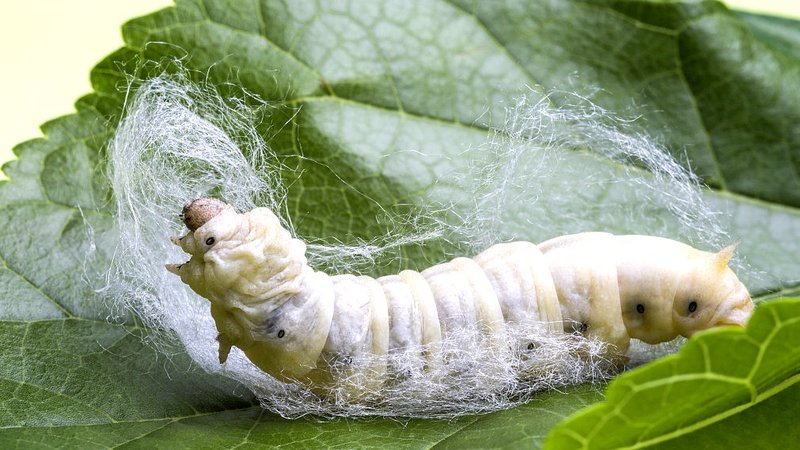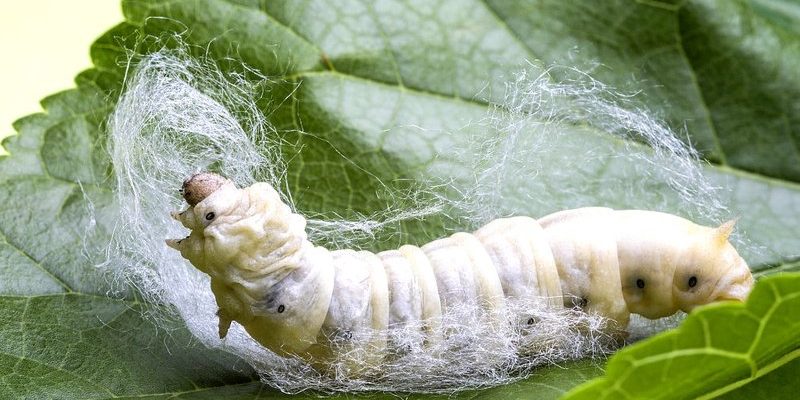
When you picture a silkworm, you might visualize a basic, somewhat dull creature. But the truth is, they come in a variety of colors, each with its unique meaning. Think of it like a box of crayons—each color serves its purpose, and exploring these variations can give you insights into not only the silkworms themselves but also the environment they thrive in. Join me as we explore the incredible spectrum of silkworm colors and what they signify!
Understanding Silkworm Genetics
Silkworm color variations primarily stem from their genetics. Each color is a result of specific genes that dictate pigmentation. Just like how your hair color might be influenced by your parents, silkworms inherit their colors from their genetic lineage. For instance, the presence of certain alleles, or gene variants, can contribute to shades ranging from yellow to white or even brown.
What’s really interesting here is how genetic variations can be influenced by selective breeding. Farmers often breed silkworms for certain traits, including color, to produce silk that meets market demands. This means that some hues are more common than others based on breeding choices. So, if you’re curious about a particular silkworm color, it’s likely tied to its family tree!
Common Color Variations
Let’s break down the most common silkworm colors you might encounter:
- White: This is the most prevalent color in domesticated silkworms. White silkworms, like the popular Bombyx mori, are favored for their silk quality.
- Yellow: Often seen in certain breeds, yellow silkworms can signify specific genetic backgrounds. Their silk is usually of high demand, too!
- Brown: While less common, brown silkworms can arise from certain environmental factors or mutations within a breed.
Each of these colors can provide essential clues about the silkworm’s lineage and its potential for silk production.
The Role of Environment in Color Variation
You might be wondering how the environment shapes the colors we see in silkworms. Yes, genetics plays a significant role, but external conditions can also have a huge impact. For instance, factors like temperature, humidity, and even diet can change a silkworm’s color.
Let me explain. If a silkworm is exposed to high temperatures, it might produce a different pigment than one raised in cooler conditions. In addition, their diet—which consists largely of mulberry leaves—can alter their color as well. A change in leaf quality or availability can lead to noticeable differences in the silkworm’s hue. It’s a little like how your food choices can impact your health; silkworms react similarly based on their nutritional intake!
Environmental Stressors and Color Changes
Sometimes, stressors can provoke unexpected color changes. For example, if silkworms face disease or poor living conditions, you might notice their colors fading or altering. This change is often a sign of distress and can affect their overall health and lifespan.
Understanding these environmental factors is crucial for anyone raising silkworms—whether for hobby or commercial silk production. By monitoring their conditions and diet, you can help keep their colors vibrant and their health intact.
The Significance of Color in Silkworm Breeding
Now that we’ve established how colors come to be, let’s discuss why this matters in the world of breeding. Breeders often select silkworms not just for their silk production capabilities but also for their colors. Certain colors are preferred in specific markets, and breeding goes hand-in-hand with demand.
For example, if a breeder wants to cater to a market looking for premium silk, they might focus on raising white silkworms. This preference ties back to the silk quality produced. White silk is often seen as more desirable in the textile industry, which might mean higher prices for those good-looking larvae!
Market Trends Impacting Silkworm Colors
Interestingly, market trends can shift preferences over time. What was once favored may fall out of style, and vice versa. For instance, brown or less common colors may become trendy as more consumers seek unique fabrics. Breeders have to stay attuned to these shifts to ensure they’re meeting the needs of the market, which, in turn, influences which silkworm colors remain popular.
By understanding these market dynamics, you can appreciate the broader implications of color variations beyond the surface, bringing you closer to the intricate world of silk production.
Are All Silkworm Colors Equal? Comparing Silk Qualities
You might think that with so much variety, all silkworm colors produce silk of equal quality. Not quite! The silk’s quality can actually vary, depending on the silkworm’s color and genetics.
For example, the white silkworms, particularly the Bombyx mori, are known for producing the finest silk. This silk is smooth and long, making it the go-to choice in the textile industry. In contrast, while yellow silkworms produce quality silk, it may not reach the same level of finesse as that of their white counterparts.
Evaluating Silk Quality by Color
To assess silk quality, you can look at several factors, including:
- Texture: White silk typically has a smoother texture.
- Tensile strength: The strength of silk can vary between colors, affecting its durability.
- Sheen: The glossiness or shine of the silk may differ based on color.
So, while all silkworms offer something valuable, understanding these distinctions can help you make more informed choices—whether you’re purchasing silk or thinking about raising silkworms yourself.
Future of Silkworm Breeding and Color Variations
Looking ahead, the future of silkworm breeding is full of possibilities. Advances in genetics and breeding techniques could lead to even more color variations, which might change the silk industry landscape. As consumers continue to demand more diversity and sustainability, breeders could respond by developing new lines of silkworms that meet these needs.
With the rise of eco-conscious fashion, the industry might also shift to highlight unique colors that stand out from traditional white silk. Breeders who embrace these trends could find a niche market that values the unusual yet beautiful hues of silkworms.
What This Means for You
For those interested in silk or silkworms, keeping an eye on these evolving trends can be beneficial. If you’re thinking of raising silkworms or investing in silk products, understanding these color variations can set you up for success. It’s about more than just aesthetics; it’s about making informed decisions based on knowledge and market trends.
Silkworm color variations provide a window into their genetic backgrounds, environmental influences, and the commercial silk market. From the classic white hues to the rarer shades, each color tells a story that extends beyond just appearance. Understanding these differences can enrich your appreciation for these incredible creatures and the silk they produce.
So, next time you see a silkworm, take a moment to admire its color. You’re not just looking at a tiny worm; you’re witnessing a combination of genetics, environment, and human influence all wrapped in one unique package. Whether you’re a budding enthusiast or a seasoned silk aficionado, there’s always something new to discover in the colorful world of silkworms.

